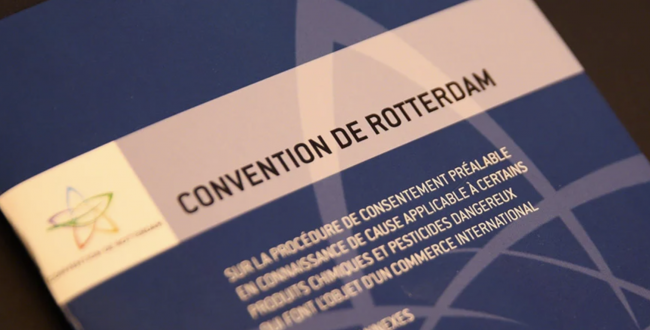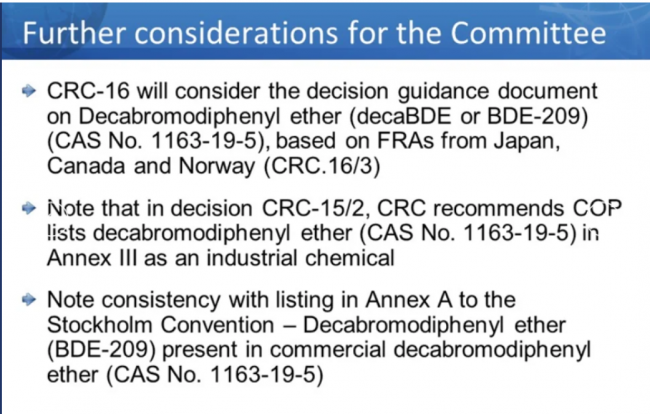Despite a few technical hitches, the work of the Chemical Review Committee (CRC) progressed rapidly on Wednesday. Participants reconvened online to begin reviewing the draft guidance on decabromodiphenyl ether (decaBDE). This industrial chemical is used as a flame retardant in a wide variety of internationally-traded products, including electronics, textiles, foam furniture cushions, vehicles, and building materials.
In 2019, following notifications of final regulatory action from three countries (Canada, Japan and Norway), the Chemical Review Committee decided to recommend decaBDE for listing in Annex III of the Rotterdam Convention. If the Conference of Parties agrees to accept this recommendation, decaBDE will be subjected to the Convention’s prior informed consent procedure, which would notify importers prior to trade in this substance.
The Committee is now finalizing a decision guidance document designed to help countries understand exactly what is being listed, identify possible alternatives to decaBDE, and provide references to additional information. Once finalized, the guidance will be sent to the Conference of the Parties to inform its decision-making at its next meeting. In Wednesday’s discussions, delegates considered the technical and legal bases for identifying decaBDE, considering points such as how countries listed decaBDE notifications of final regulatory action, the CAS number of the substance, and how decaBDE is identified in the Stockholm Convention. Delegates were reminded that the way the substance is listed under the Stockholm Convention differs from its treatment under the Rotterdam Convention.
Following this discussion and work related to the operation of the Committee, CRC Chair Noluzuko “Zukie” Gwayi suspended the formal plenary session and members and observers reconvened in an informal working group to continue discussions of perfluorooctanoic acid (PFOA). The group made steady progress and will resume consideration of both PFOA and decaBDE in plenary later in the week.

